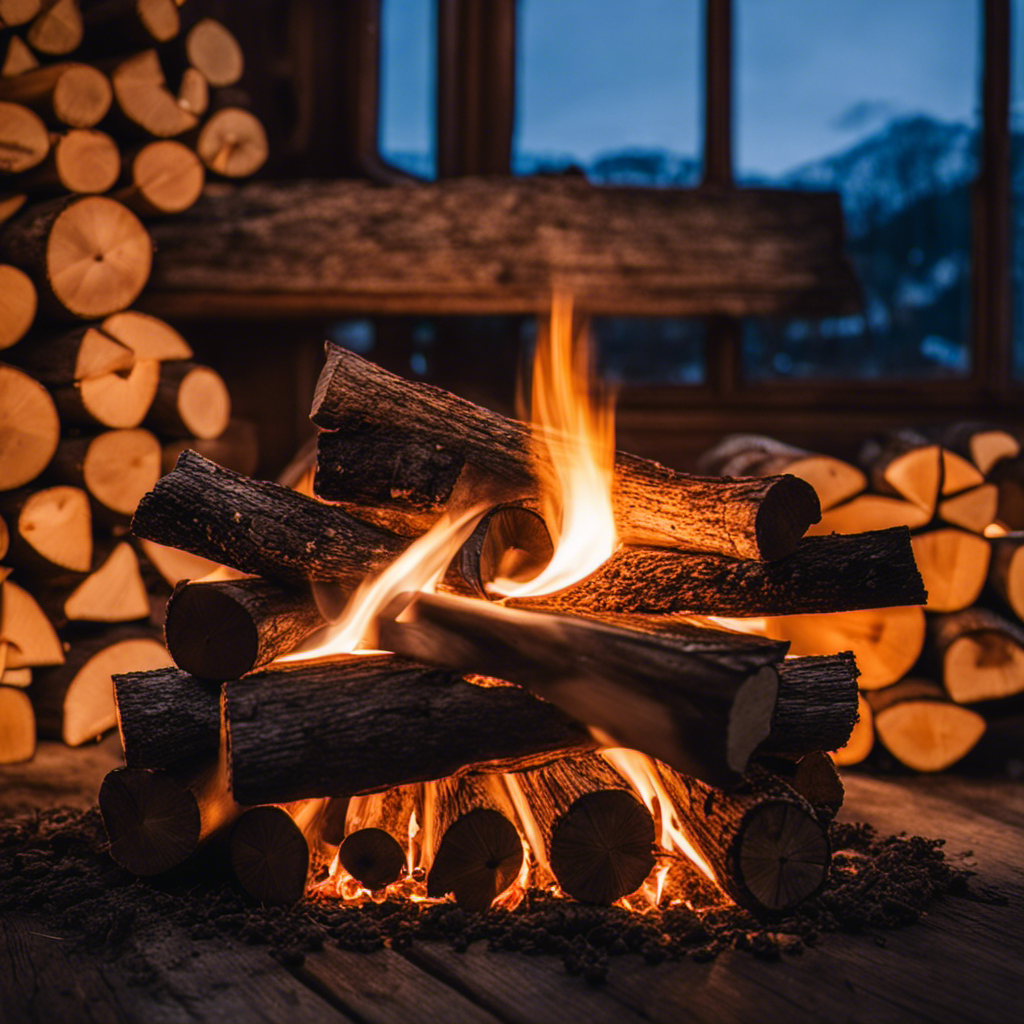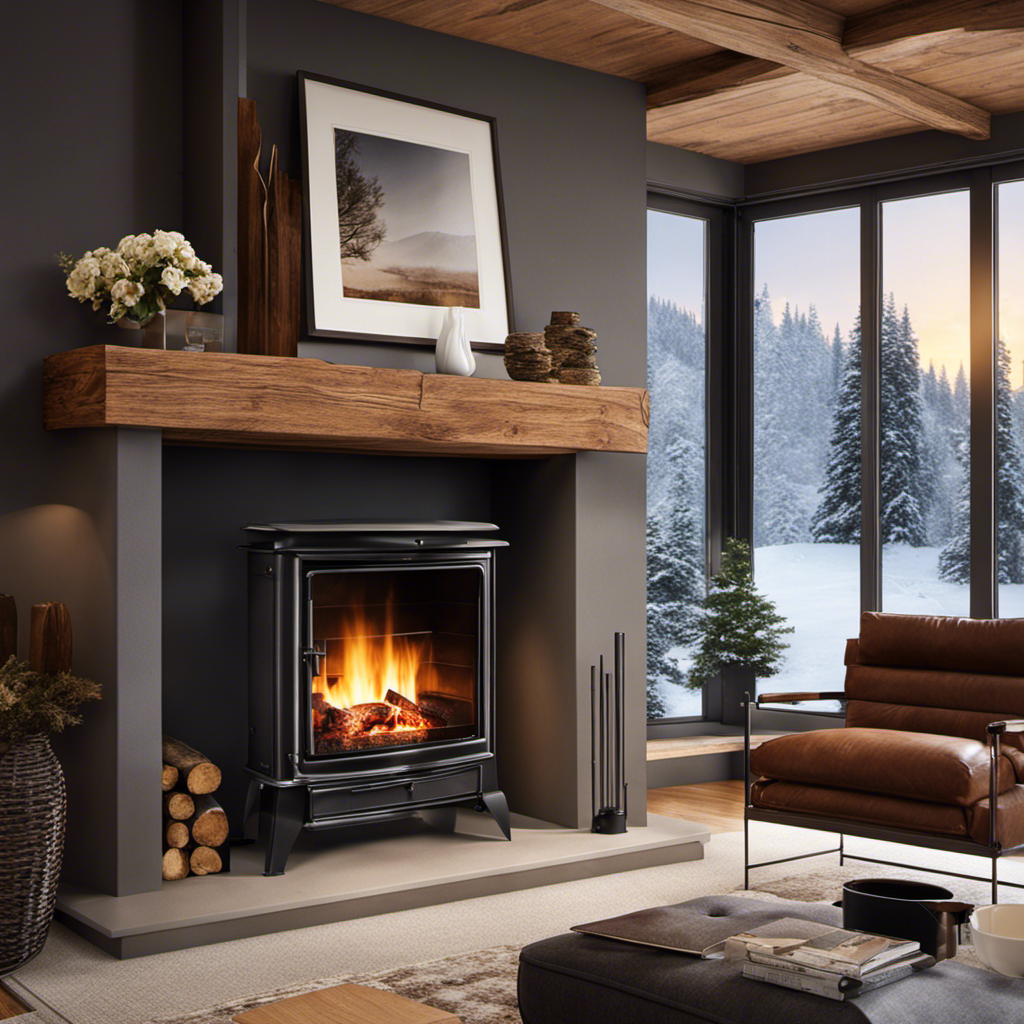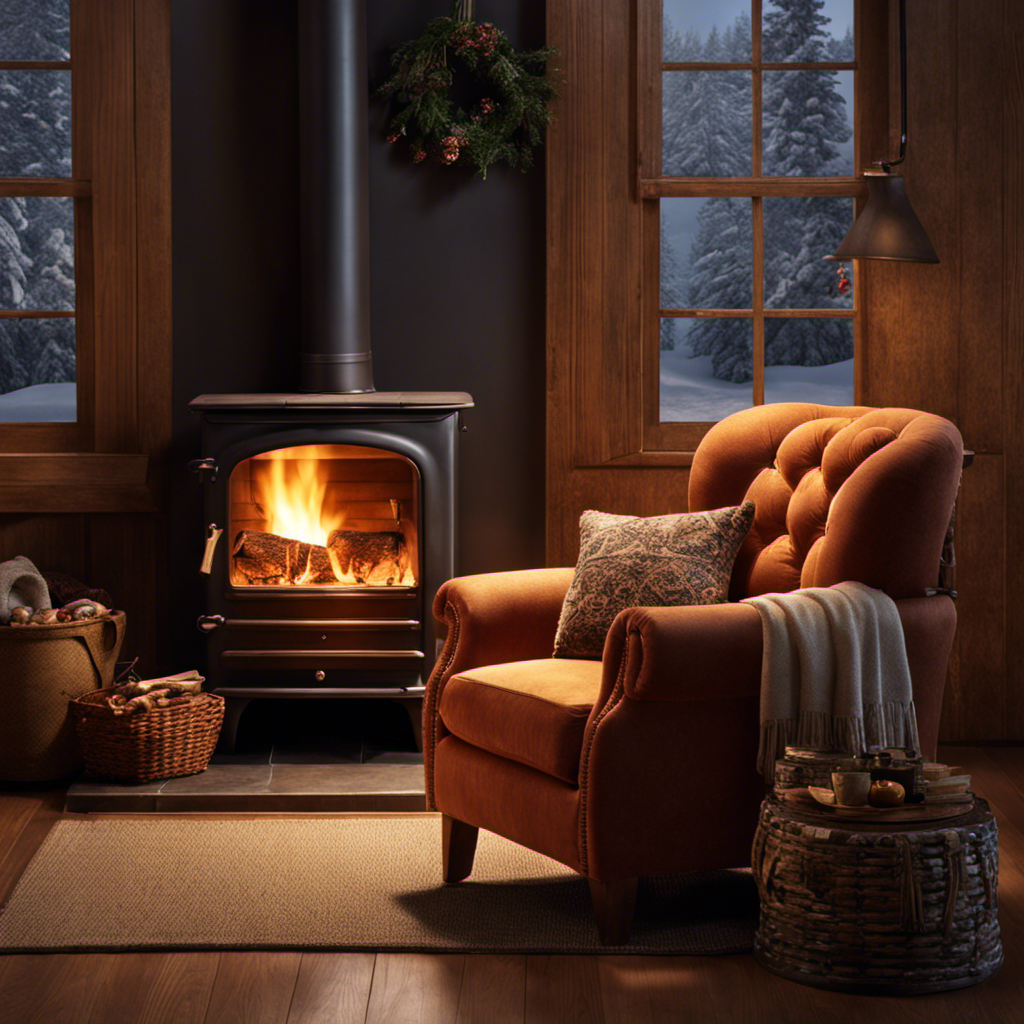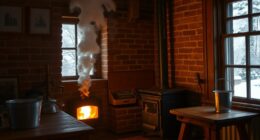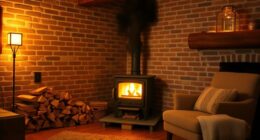Starting a fire in a wood-burning stove may appear intimidating initially, but do not worry! I am here to assist with my reliable and effective technique.
In just a few simple steps, you’ll have a roaring fire that will keep you warm and cozy all winter long.
So grab your firewood, prepare your stove, and let’s get started on this fiery adventure together!
Key Takeaways
- Seasoned firewood burns efficiently and produces less smoke.
- Softwoods like pine are great for starting the fire.
- Regularly cleaning the stove improves its efficiency and prolongs its lifespan.
- Proper firewood storage is crucial for maintaining dry and seasoned wood.
Choosing the Right Firewood
I always make sure to choose the right firewood for my stove to ensure a warm and efficient fire.
When it comes to choosing firewood, one of the most important factors to consider is whether it’s seasoned or not. Seasoned firewood has been properly dried for at least six months, allowing it to burn more efficiently and produce less smoke. It also reduces the risk of creosote buildup in the chimney.
Another consideration is the type of firewood. Hardwoods such as oak and maple burn longer and produce more heat compared to softwoods like pine. However, softwoods ignite more easily and are great for starting the fire.
By selecting the right combination of seasoned firewood and appropriate types of wood, I can ensure a cozy and efficient fire in my wood stove.
Now, let’s move on to preparing the wood stove.
Preparing the Wood Stove
The first step in preparing the wood stove is to clean out the ashes from the previous fire. This is crucial for ensuring proper ventilation and preventing any potential fire hazards. Cleaning the stove regularly not only improves its efficiency but also prolongs its lifespan. Here is a helpful table outlining the steps to clean a wood stove:
| Step | Description |
|---|---|
| 1 | Allow the stove to cool down completely before starting the cleaning process. |
| 2 | Use a shovel or ash vacuum to remove the ashes from the stove. |
| 3 | Wipe down the interior and exterior surfaces of the stove with a soft cloth or brush. |
| 4 | Inspect and clean the stovepipe and chimney to remove any creosote buildup. |
Building the Fire
After cleaning out the ashes, it’s important to carefully arrange the wood and kindling in the stove to ensure a successful fire. Proper firewood storage is crucial for maintaining dry and seasoned wood, which burns more efficiently. Make sure to store firewood in a well-ventilated area, off the ground, and protected from rain or snow.
When it’s time to start a fire, begin by placing a layer of crumpled newspaper or fire starters in the firebox. Next, arrange small pieces of kindling, such as twigs or small branches, on top of the newspaper. Gradually add larger pieces of firewood, making sure to leave enough space for air circulation. This will help the fire burn evenly and produce a steady heat.
Now, let’s move on to lighting the fire and getting it roaring.
Lighting the Fire
To successfully light the fire, start by carefully placing the lit match or lighter directly under the kindling, and then gently blow on the flames to help them catch.
Before attempting to light the fire, ensure that you have proper firewood storage in place. It’s important to store your firewood in a dry and well-ventilated area, away from your home or any flammable materials. This will prevent the firewood from becoming damp or attracting pests.
Additionally, practicing fire safety is crucial when starting a fire. Make sure to keep a fire extinguisher nearby and never leave the fire unattended. Keep children and pets at a safe distance and avoid using accelerants like gasoline to start the fire.
Maintaining and Controlling the Fire
I’m keeping a close eye on the flames, but I need to adjust the airflow to maintain and control the fire.
Controlling the temperature in a wood stove is crucial for efficient and safe operation. To do this, I first ensure that the damper is fully open to allow for proper airflow. If the fire is too hot, I can reduce the airflow by partially closing the damper. On the other hand, if the fire isn’t hot enough, I can increase the airflow by opening the damper wider.
It’s important to find the right balance to maintain a steady and consistent temperature. Troubleshooting common issues, such as a smoky fire or difficulty in getting the fire started, may involve adjusting the airflow and ensuring proper ventilation.
Frequently Asked Questions
How Long Does It Typically Take for a Firewood Stove to Reach Optimal Heating Temperature?
It typically takes about 30 minutes for a firewood stove to reach its optimal heating temperature. Proper ventilation and regular firewood stove maintenance are key to ensuring efficient and effective heating.
Can I Use Softwood Instead of Hardwood in My Firewood Stove?
Yes, you can use softwood instead of hardwood in your firewood stove. Softwood ignites faster and produces more heat, but burns faster and creates more creosote. Hardwood burns longer and produces less creosote, but takes longer to ignite.
What Are Some Common Mistakes to Avoid When Building a Fire in a Wood Stove?
Common mistakes when building a fire in a wood stove include using too much newspaper, not opening the damper properly, and overcrowding the stove. It’s important to follow safety precautions to prevent accidents and ensure efficient heating.
Is It Safe to Leave a Firewood Stove Unattended?
Leaving a firewood stove unattended can be unsafe due to the potential risks of uncontrolled fires and carbon monoxide poisoning. It is crucial to prioritize safety and never leave a wood stove unattended.
How Often Should I Clean the Chimney of My Firewood Stove?
I clean my chimney once a year to ensure proper ventilation and prevent build-up of creosote. Regular chimney maintenance is crucial for the safe and efficient operation of a firewood stove.
Is it easy to get burned when starting a fire in a wood stove?
Starting a fire in a wood stove must be approached with caution to avoid burns from wood stoves. While it may seem manageable, there is a risk of getting burned if not handled correctly. Safety measures like using fire-resistant gloves and maintaining proper ventilation can help minimize the chances of accidental burns.
Conclusion
Starting a fire in a wood stove may seem like a daunting task, but with the right knowledge and techniques, it can be mastered in no time.
By choosing the right firewood, preparing the stove, building the fire, and lighting it properly, you can enjoy a cozy and warm atmosphere in your home.
Remember to always maintain and control the fire to ensure it burns efficiently and safely.
So go ahead, embrace the warmth and comfort of a wood stove fire!

